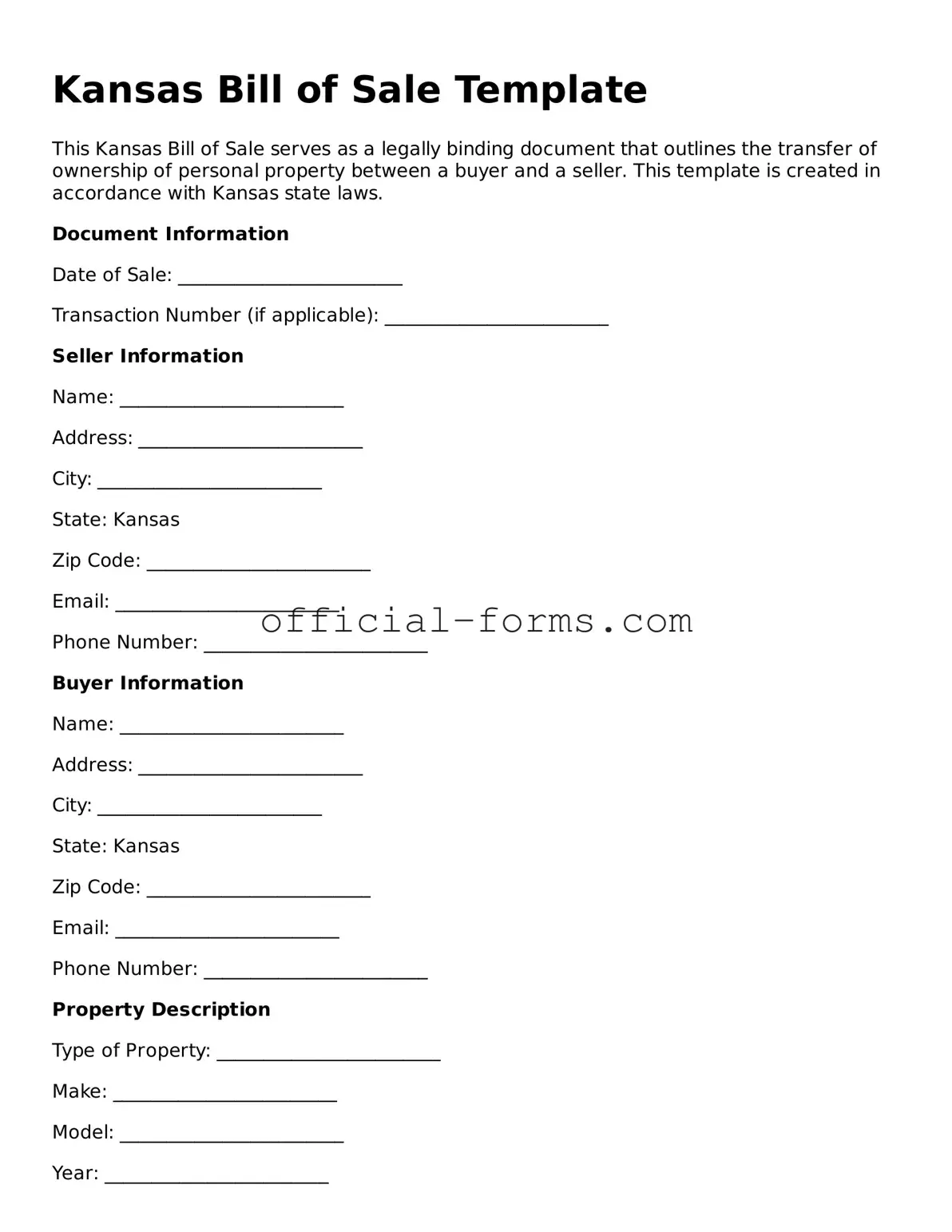Filling out the Kansas Bill of Sale form can seem straightforward, but many people make common mistakes that can lead to complications down the line. One frequent error is failing to include all necessary information. This includes not just the buyer and seller’s names but also their addresses and contact information. Omitting these details can create confusion and make it difficult to establish ownership later.
Another mistake is not accurately describing the item being sold. Whether it’s a vehicle, a piece of equipment, or personal property, a clear and precise description is essential. This should include the make, model, year, and any identifying numbers, such as a VIN for vehicles. Without this information, proving ownership can become problematic.
Many individuals also overlook the importance of including the sale price. Leaving this section blank or entering an inaccurate amount can lead to disputes between the buyer and seller. It’s crucial to state the agreed-upon price clearly to avoid any misunderstandings in the future.
Additionally, signatures are a critical component of the Bill of Sale. Some people forget to sign the document or neglect to have the other party sign it as well. Both signatures are necessary to validate the sale and confirm that both parties agree to the terms outlined in the document.
Another common error involves not providing a date for the transaction. A date is essential for establishing when the sale occurred. This can be important for tax purposes or if any legal issues arise later on. Without a date, the document may lack the necessary context to be effective.
Lastly, individuals sometimes fail to make copies of the completed Bill of Sale. After signing, it’s wise to keep a copy for personal records. This ensures that both parties have access to the agreement should any questions or disputes arise in the future. Keeping a record is a simple step that can save time and hassle later.
